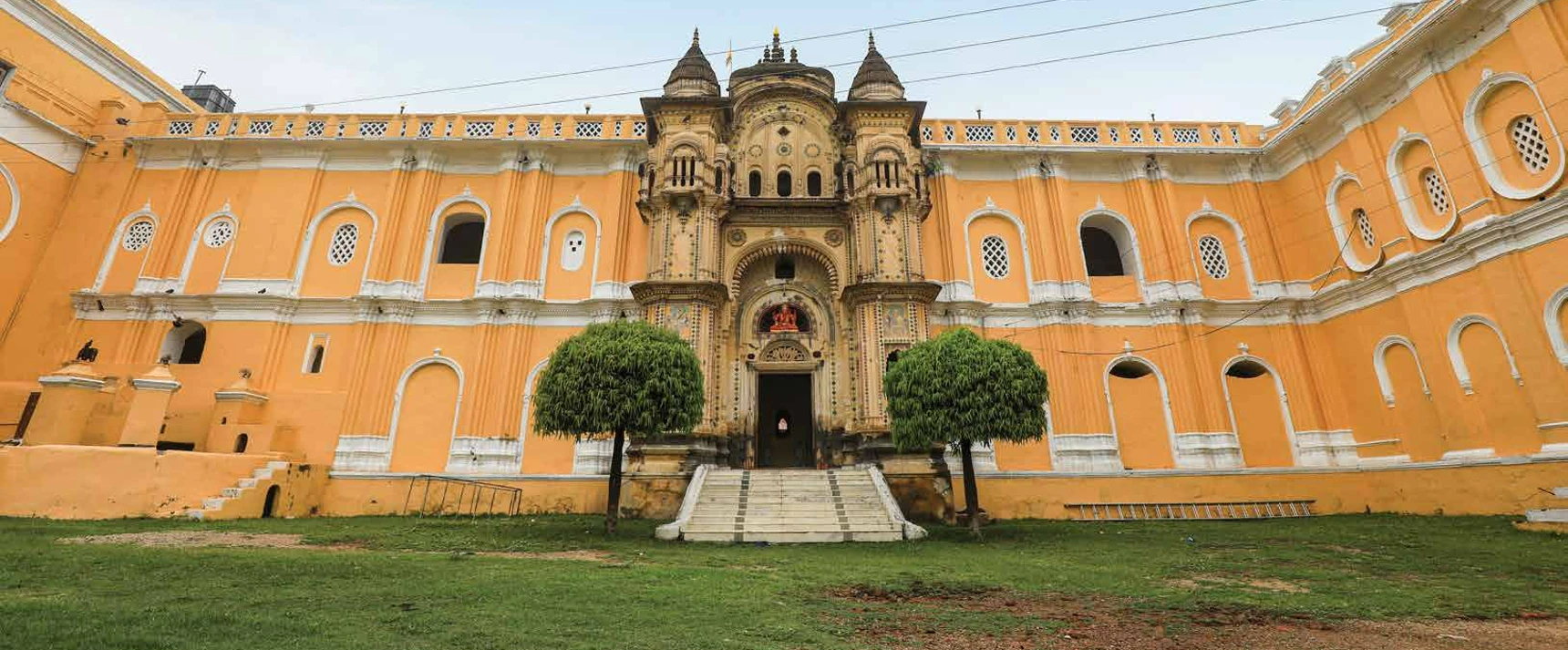
SAMTHAR FORT
Once the seat of a powerful princely state, Samthar – 60 km north of Jhansi – is best known for its magnificent fort, a spectacular amalgamation of Bundelkhandi and French architecture.
The origins of the fortification here can be traced to the 16th century, when Samsher Khan, a Subedar or Governor of Mughal Emperor Babur (r. 1526 – 1530CE), was stationed at nearby Erach (23 km away). He is said to have built a small fort or garhi and named it ‘Shamshergarh’, after himself. The fort was used as a small check-post of the Mughals and later became part of the Bundela kingdom of Datia.
During the 18th century, when Datia’s ruler Ramchandra Singh (r. 1733 – 1762 CE) was killed in battle, a war of
succession broke out for the Bundela throne. Ramchandra’s great-grandson Indrajeet Singh managed to take control of the kingdom with the assistance of a loyal officer named Naune Shah Gurjar. Naune Shah’s son Madan Singh rose to a position of importance and obtained governorship of Samthar Fort.
By 1760 CE, more Gurjars had settled in Samthar. The kingdom now stretched across Northern Bundelkhand, in the region between the Betwa and Pahuj rivers. Taking advantage of a series of wars between the Scindias of Gwalior and the Bundelas of Datia, Samthar declared its independence in 1785 CE. Due to an existing alliance with the Marathas, Samthar’s independence was recognised by them, with Ranjit Singh Rajdhar I (r. 1800 – 1815 CE), a descendant of Madan Singh, being granted the title of ‘Raja’.
Distance from Shatam Jeeva
81.2 km















































